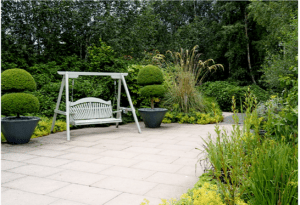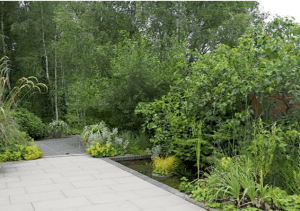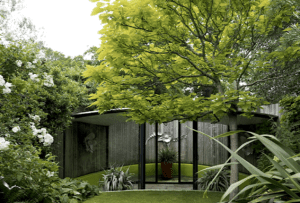I visited Harlow Carr Gardens with the family and have written a general review “here.”:http://www.silvertraveladvisor.com/review/attraction/204553-review-rhs-garden-harlow-carr
I came back with loads of pictures – too many to include in one review, so have decided to write more detailed reviews of the different parts of the garden with more pictures. This describes the lake and the lakeside gardens.
The artificially made Queen Mother’s Lake with its island and floating duck house, is at the southern end of the gardens and is the source for the stream that flows through the gardens.
Water loving plants like yellow flag iris and marsh marigold thrive on its banks. It is popular with geese and ducks as well as moorhens that can be regularly seen on the grassy slopes around the lake.
The Lakeside Gardens are a series of small gardens planted along the southern boundary of the gardens beyond the lake. They were originally created for the BBC TV series ‘Gardens through Time’ and are designed to show the differing styles of gardens over the last 100 years.
The Edwardian Garden represents garden philosophy at the turn of the 20th century. Gertrude Jekyll worked on many garden designs with the architect Edwin Lutyens. He was renowned for his love of ponds, paving and pergolas, while Jekyll was best known for creating colourful herbaceous borders.
It is reached through a pergola with seating. Beyond, is a central rectangular pond surrounded by formal layout of coniferous trees and bushes and summer flowering perennials and roses.
Next to it is the 1970s garden, when formal high maintenance gardens were being replaced by less formal gardens which needed less upkeep. They were characterised by paved areas rather than formal lawns.
The final garden is the Diarmuid Gavin Garden, which is an example of a modern C21st garden with architectural features as important (if not more important) than the plants.










